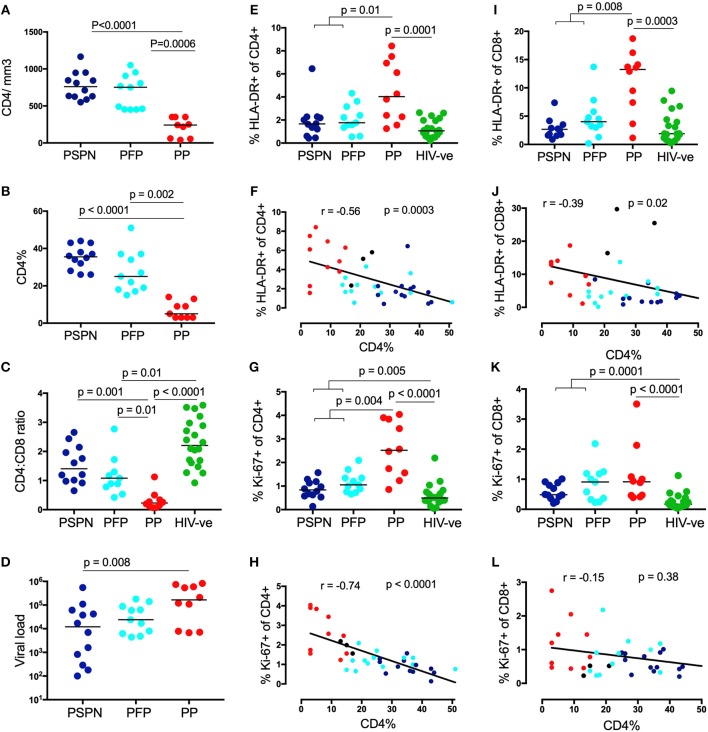Figure 1.
Pediatric slow progressors show low immune activation preferentially on CD4 T-cells. CD4 count absolute (A), CD4 percentage (B), viral load (C) in three pediatric groups: Pediatric slow progressors (PSP; n = 23) were defined here as treatment naïve, aged >5 years with CD4 counts >450/mm3 at the time point the experiments were performed. According to the longitudinal follow up we separated “pediatric future progressors” (PFP; n = 11; light blue) who would go onto treatment from true pediatric slow progressors, who stayed treatment naïve during the follow-up (PSPN; n = 12; dark blue). Pediatric progressors (PP; n = 10; red) were defined as treatment naïve, aged >5 years with CD4 counts <350/mm3. For CD4:CD8 ratio (D) age-matched uninfected controls (n = 20; green) were included as control group. (E) Frequency of HLA expression and its correlation with CD4 percentage (F) on CD4 T-cells within the 4 pediatric groups. (G,H), same as (E,F) but for Ki-67 expression. (I–L) same as (E–H) but of CD8 T-cells. For scatterplots, median, and interquartile range are shown. Kruskal-Wallis test was performed and corrected for multiple comparisons. Only significant p-values (<0.05) are given. For correlations, Spearman ranks test was used. For correlations with CD4 percentage, all HIV-infected infants were used including those not fulfilling criteria for PSP nor PP (black dots; n = 3; CD4 count >350 and <450/mm3).

